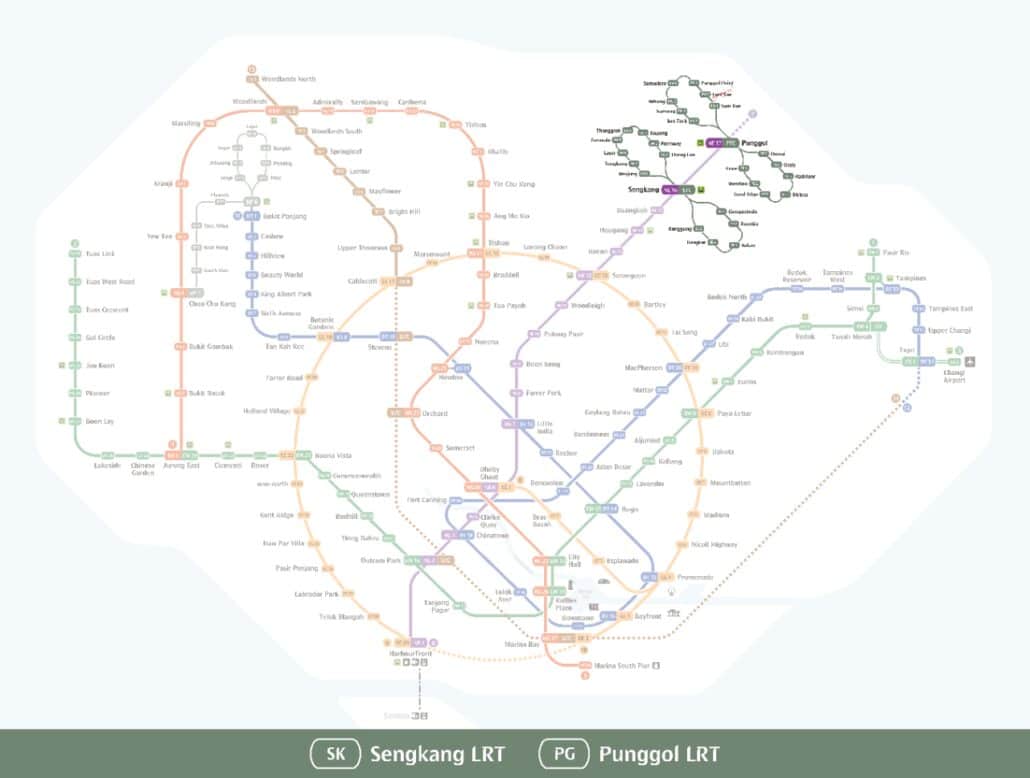In Singapore, two of the large residential estates are served by the fully driverless Sengkang and Punggol Light Rapid Transit (SPLRT) system.
Singapore Sengkang-Punggol LRT: Enhancing Commuting in the Heartlands
Introduction
Urban planners in the busy city-state of Singapore have reached a new level regionally when it comes to public transportation as well. The dedication to modern, reliable, and green transportation solutions is best illustrated in the design of the Singapore Sengkang-Punggol Light Rail Transit (LRT) system. Located within the heartlands of our island, this LRT network forms a crucial touchpoint between residents and all things commercial or leisure. This article will take you into the remarkable journey that is Sengkang-Punggol LRT: its conception, results as well as challenges, and what lies ahead.
A Vision in Motion
The Genesis of the Sengkang-Punggol LRT
The conception of the Sengkang Punggol LRT map is directly linked to Singapore’s foresight in urban planning. Due to the increasing traffic and accessibility constrain on ground levels, authorities implemented a vision of an overhead LRT network designed for fast travel within up-and-coming housing estates at Sengkang/Punggol. The outcome was a groundbreaking system that could integrate smoothly into current transportation mechanisms.
Seamless Integration and Accessibility
The Sengkang-Punggol LRT is more than just a transportation tool; it represents careful planning. The system is seamlessly integrated with several vital bus interchanges and various MRT stations, which renders it an important component of Singapore’s overall public mass transit scheme. Such connectivity not only speeds up travel time but also allows a rider to switch between different modes of transit, creating an uninterrupted journey from one side of the city to the other.
Impact and Challenges
Revolutionizing the Commute
For those living in the suburban heartlands, the Sengkang-Punggol LRT has changed their way of getting around. The improvement in the availability of a convenient, dedicated, and reliable means of transportation cumulatively pushed people to start shifting from private modes, resulting in decongesting roads as well as a reduction in carbon footprint. Furthermore, the use of elevated tracks for LRT reduces land impact thereby limiting its footprint and preserving important green spaces as well as meeting sustainability objectives set out by many municipalities.
Tackling Problems and Optimizing Services
As with any venture of transformation, not everything has been smooth for the Sengkang-Punggol LRT. Some technical errors or maintenance issues at times broke services quite frequently. Yet the proactive response of authorities to this pattern has driven inflows and exits in a beneficial direction. More dependable and efficient service No longer plagued by the maintenance troubles that weighed down its predecessors, as well as greater staff training and technological improvements lead to a more reliable operation which makes travelers feel safer.
The Road Ahead
Expanding Horizons: Future Developments
In the wake of its success, there will be more extensions and improvements to come. In response to the growing need for connectivity and accessibility, work is being carried out in progress to extend LRT lines between more neighborhoods further. The expansion fits into the broader ambition of Singapore to make all travel more seamless, supported by its commitment to provide public transportation within a 10-minute radius for all residents.
A Communal Tapestry
So, in summary, the Sengkang-Punggol LRT represents a good test bed of sustainability and innovative transit for Singapore. This world-class LRT network, cloaked in the everyday fabric of suburban living, provides residents with a sustainable and viable mode to get around their city efficiently, comfortably, and economically. Singapore moves forward, as always — and the LRT will forever be a testament to this: A real-world expression of how human-centric urban planning can improve the quality of life for residents in line with what a city needs above all else.

